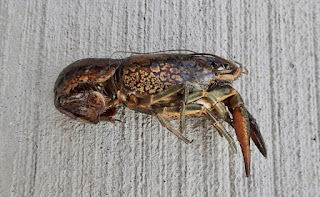Kaur D, Iqbal A, Soto I, Kubec J, Buřič M. 2023. Effects of chemical cues and prior experience on predator avoidance in crayfish. Ecology and Evolution 13(8):e10426. https://doi.org/10.1002/ece3.10426
Abstract
Multisensory stimuli provide organisms with information to assess the threat present in the surroundings. Olfactory cues show dominance over other sensory modalities in the aquatic environment. The impact of chemical predator cues combined with experiences gained (learning) in species without previous contact is not fully understood. We investigated the foraging and shelter-seeking behaviour of naïve and experienced marbled crayfish Procambarus virginalis juveniles in response to the chemical signals of pumpkinseed Lepomis gibbosus alone and in combination with alarm chemicals produced by preyed-upon conspecifics. Naïve and experienced (previously exposed to pumpkinseed predation) juveniles were stocked in an arena with shelter and feed and exposed (1) to water from a tank containing a predator actively feeding on conspecifics, (2) water from a tank with predator only and (3) water only as control. Crayfish exposed to the combined stimuli avoided the inlet zone and gravitated to shelter zone of the arena to a greater extent than did those exposed to predator-only cues and the control. Regardless of the treatment, experienced crayfish showed significantly reduced interest in feeding. Our findings imply that crayfish response to threat-associated odours with the greatest potency when visual or tactile cues are present, while previous encounters with predators may make them more cautious.
Keywords: alarm cues • crayfish • fish • infochemicals • kairomones • predation






